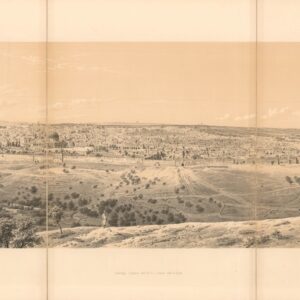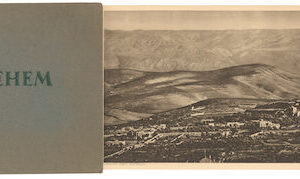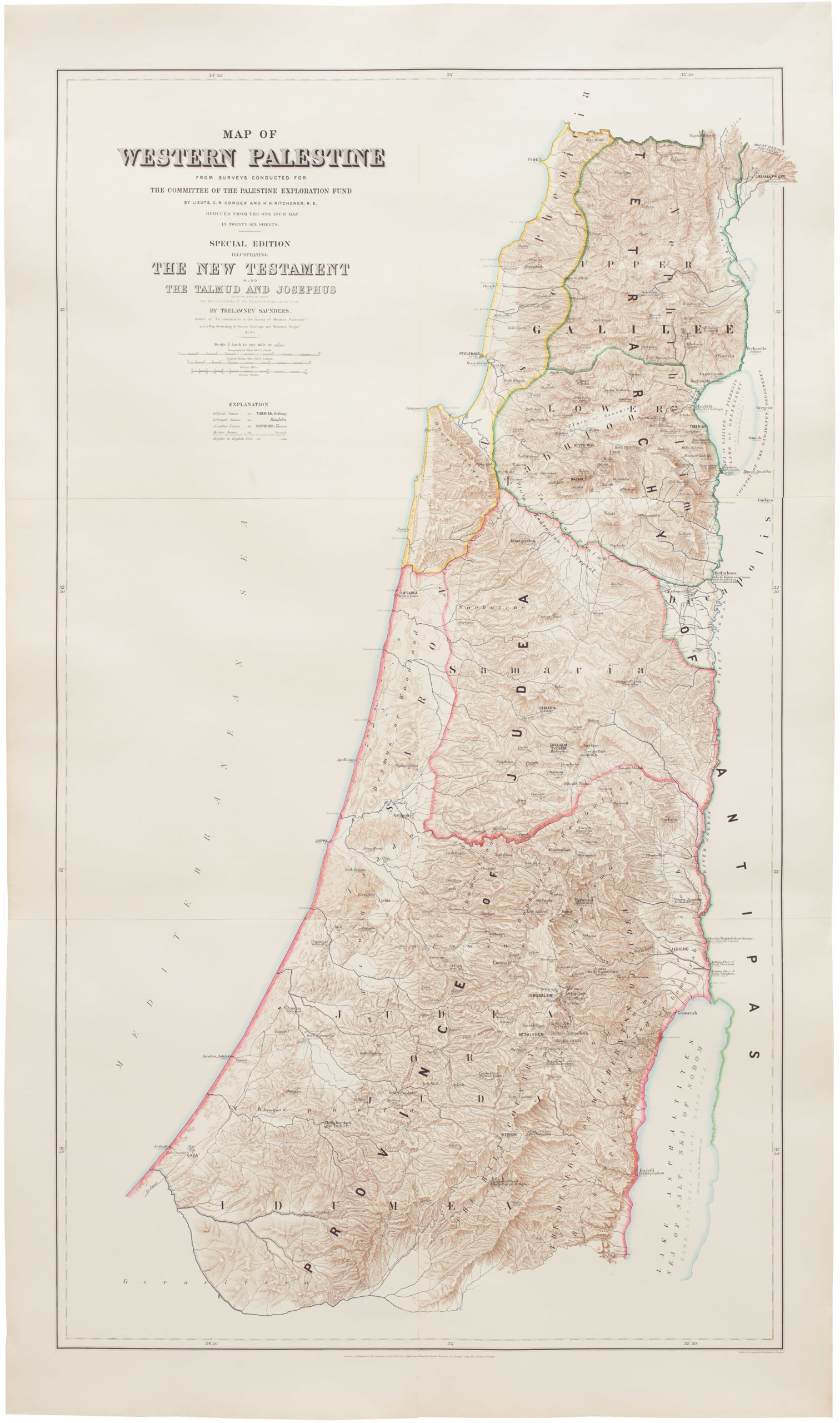Unrecorded large-scale cyanotype archaeological plan of Old Damascus during the Crusades.
[Old Damascus]
$1,900
1 in stock
Description
This unique town plan of Damascus was created by the Syrian Department of Antiquities in order to document important archaeological features and architectural landmarks within the city. All text is in Arabic. The title explains that the historical focus of the map is the period between 491–868 hijri, or 1098–1464 AD in the Gregorian calendar, roughly corresponding to the Seljuk, Ayyubid, and Mamluk periods.
The fact that there are numbered blank lines in the extensive list of places along the left side would seem to indicate that this was designed to be a working plan, upon which a surveyor or archaeologist could make additions.
The late 11th century was a tumultuous time in the Levant. The First Crusade saw the capture of Jerusalem in 1099 AD and the establishment of the Kingdom of Jerusalem. In nearby Damascus, the Seljuk dynasty took power and established a court there. Originally Turkish, the Seljuks had previously conquered Persian peoples in the area of modern-day Iran and gradually assimilated Persian culture into their own. The city came under increased Shia influence and saw an expansion of religious and cultural institutions.
This map documents clear evidence of this process. In the key along the left side, many of the sites and buildings are religious institutions (madrasas) and hospitals (maristans). The Seljuk period was not without major conflict, however. The city became a target of the Second Crusade, but the so-called Siege of Damascus in 1148 resulted in a decisive victory for the city’s inhabitants over the Crusaders.
The city then came under the control of the Ayyubid Dynasty, including its most famous ruler, Salah al-Din. The Ayyubid period saw a further expansion of religious institutions and architecture, as documented by our plan. The Ayyubids were defeated by the Mongols, who intern were replaced by the Mamluks, another dynasty of Turkish origins. The Mamluks further added to the rich palimpsest of splendid architecture, which makes Damascus such a special urban center.
A note on dating of this town plan: there is no publication date on the plan itself. We have dated it to the early 1920s based on two clues: (a) The Syrian Department of Antiquities was established in 1923, and (b) The printing process, cyanotype (blueprint), a type of photo-reprographic technique first developed in England in the mid-19th century, fell out of fashion in most places in by the 1920s, suggesting this plan is not later.
Cartographer(s):
The Syrian Department of Antiquities was the official government body in charge of cultural heritage in Syria.
Condition Description
Overall age toning. Some minor water damage. Backed on archival tissue. Wear and minor repairs along original fold lines.
References

![[Persuasive Cartography] Die Araber, Israel und die Supermächte.](https://neatlinemaps.com/wp-content/uploads/2025/10/NL-02133_thumbnail-300x300.jpg)


